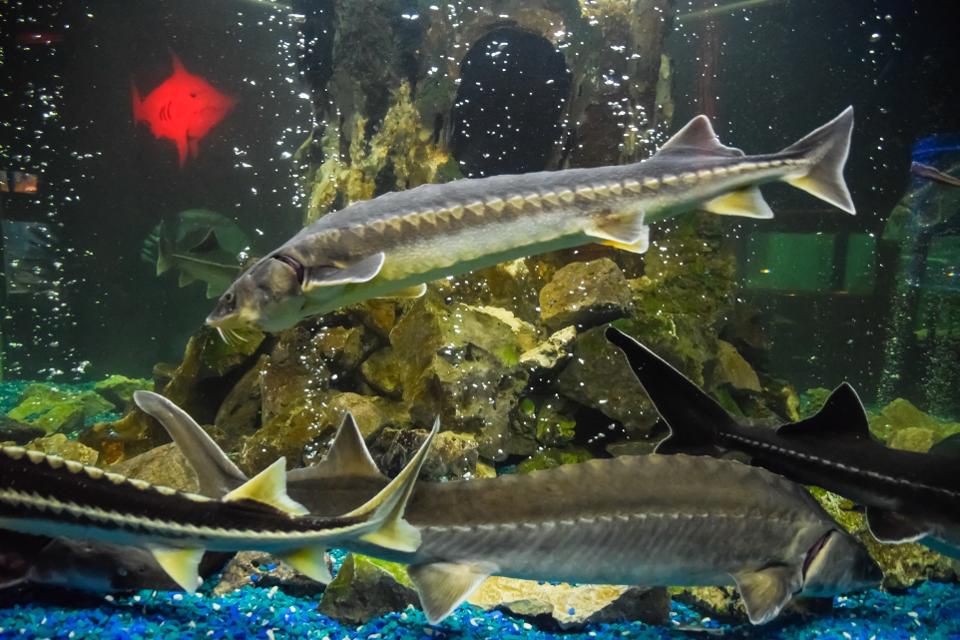Sturgeon Aquafarms Aims To Sustainably Produce Caviar While Restoring Wild Sturgeon Populations
Category : Food Stories, Party Ideas, Recipes, Press Room |
Posted : Apr 22, 2019
FORBES, by Priya Shukla, Contributor
I write about the ocean, climate change, and the future of our planet.
Sturgeon have been on this planet for over 200 million years, coming into existence long before the dinosaurs evolved and outlasting them into the present day. Like salmon, sturgeon spend their century-long lives traveling between the ocean and the rivers that feed into it. European sturgeon ("belugas") exist within the Caspian, Black, and Adriatic Seas. Over the past several decades, female belugas - which take several dozen years to mature - have been heavily fished for the use of their eggs in caviar production, a delicacy that consists of salt-cured fish eggs ("roe").
The United States Fish and Wildlife Service (USFWS) banned the import of beluga products from the Caspian Sea in 2005, which consumed 60 percent of the world's beluga caviar at the time. Around the same time, the USFWS listed beluga sturgeon as an endangered species (the International Union for Conservation of Nature also considers belugas to be "critically endangered"), stating that "we are currently aware of only one aquaculture facility located in the United States ... that may eventually take advantage of the exemption for aquacultured [beluga sturgeon] originating from outside littoral states." That facility is Sturgeon Aquafarms, and they currently have 20,000 beluga sturgeon, which may be greater than the current wild population of Beluga sturgeon in the Caspian Sea.

In 1999, Marky's, a Miami-based gourmet food store, noticed a decline in the availability of beluga caviar sourced from the wild. This led to the founding of an affiliate company that, according to Mark Zaslavsky (Marky's CEO and managing partner at Sturgeon Aquafarms), "could emulate Caspian Sea habitat for the growing of sturgeon in Florida, USA."
Founded in 2001 and based in Northwest Florida, Sturgeon Aquafarms started with 55 broodstocks of Beluga, Osetra, and Sevruga sturgeon that arrived via 13 trans-Atlantic flights in 2003. Ten years later, they are the world's largest source of beluga caviar, while also providing caviar from four other sturgeon species. And this month, Marky's will be opening a Madison Avenue restaurant providing sturgeon caviar from "farm-to-spoon".
As natural sturgeon populations decline, few sturgeon fisheries remain. In sturgeon aquaculture facilities, conditions are generally more optimal than they are in nature, allowing sturgeon to mature more quickly. However, predicting and controlling caviar production can prove difficult because female sturgeon do not mature at the same rate or reproduce every year. Nonetheless, Sturgeon Aquafarms supplied ~160,000 fertilized eggs in 2017 and 2018 for the purposes of reviving the Caspian Sea's beluga population.
According to Zaslavsky, "Our business model since inception, has included sourcing broodstock, fingerlings, and fertilized eggs from our farm to ... study, protect, or otherwise enhance the survival of wild populations of beluga sturgeon."
Source: Forbes













